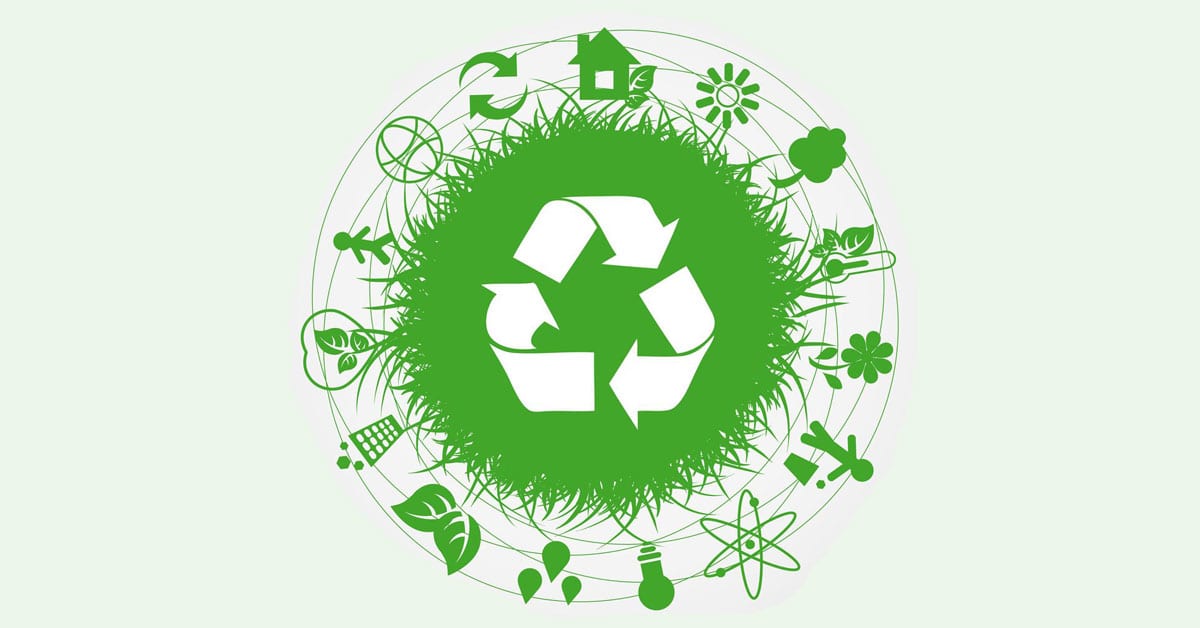You might already be aware of the positive effects of recycling, such as when old items are turned into new items as well as helping in the battle against climate change. But, if you are just getting started, you have to know how to recycle correctly. Recycling is more than tossing recyclable materials in a bin for a collector to come get. Here are some tips to help you recycle as effectively as possible.
- Learn about the items you can recycle. It is natural to want to reduce the amount of waste coming from your home, but not everything can be recycled. You should first check in with your local service provider, but here are some basics that are more universal.
- Aluminum: This could include soda cans, beer cans, soup cans, and even foil. Make sure to thoroughly rinse out any items to clean out food or liquid that might draw attention from bugs or animals. Aluminum cans can be crushed to save space. Labels on soup cans will need to be removed.
- Glass: Nearly all types of glass containers are recyclable. Rinse out the container to remove any leftover food or drink and remove any paper labels that can be removed. If the glass shatters, it is normally no longer recyclable.
- Plastic: Not all plastic can be recycled. Most bottles and containers are labeled to indicate whether they are recyclable. Utensils are normally not recyclable, nor are plastic bags. As plastic grocery bags are quickly becoming a thing of the past, you might not run into having too many in your home.
- Paper and Cardboard: Most types of paper can be recycled, whether it is a book, flyer, or junk mail. Waxy papers or paper that has been mixed with plastic cannot be recycled. Cardboard normally can be recycled, but not if it has been used for food, such as a pizza box.
- Purchase recycling bins for your home. Separating your recycling might be the hardest habit to get used to as you proceed in your recycling journey. According to Disposalzone, there are stackable bins that you can get for your home. This will help you divide your recyclable materials into the categories that work with your local recycling center. You normally should have four bins, dividing your items into paper, glass, plastic, and aluminum, but it will be up to you and your recycling center on how you are able to recycle.
- Pay attention to what you are buying. Some of the work in reducing your carbon footprint is not just about recycling but also paying attention to what you are buying. You can look to see the type of packaging that your products are coming in and whether they can be recycled. More often, companies are paying better attention to the impact of their products, like Saltwater Brewery, who is producing beer can rings that are edible. This means if their product winds up in the ocean, it will not harm animals or become part of the plastics in the ocean, but instead will be eaten or breakdown. Not all companies are this good, but just knowing that they are out there can help you watch out for them.
- Buy recycled products. If you are going to the trouble of recycling, make sure that you are also purchasing products that have been recycled. It keeps the cycle up and going and really, it makes a lot of sense. Like we said above, look at the packaging of the items you buy and if they have not already been recycled, make sure that they can be.
- Recycle your tech products. You cannot put an old computer or phone in your recycling, and, as a result, landfills seem to be ever-filling with discarded tech products. Luckily, many cell phone providers will take your phone back from you to recycle. You will not get money for this, so make sure that your phone is really out of commission before doing away with it.
- Recycle old appliances. Think for a moment about the sheer size of most household appliances, including dishwashers, dryers, and refrigerators. When an appliance breaks down, it often winds up taking up a lot of space in a landfill. Older appliances, made before 1995, are actually dangerous to the environment due to the materials that they were made with, making it more important that you dispose of them safely. Luckily, if you are in the United States, the EPA has a program called RAD (Responsible Appliance Disposal) that will help you recycle and dispose of your old appliances safely.
- Don’t make waste when you don’t have to. Beyond recycling the items that can be recycled, you should aim to reduce the overall waste coming from your house. Some of this will be due to the types of packaging that products are coming with, much of which will be out of your hands. Buying products that have less non-recyclable materials or even products that are not overly packaged will reduce the waste in your home. Cooking as much as possible will also help reduce waste that is coming out of your kitchen.
- Compost when you can. Composting is the process of recycling food waste from your house, allowing it to breakdown naturally in a safe location. This process might be a little challenging to get used to, but once you have, you will reduce waste and produce soil you can use for gardening.
- Stick with it. It can be hard to change any habit, including getting into the habit of recycling. It might seem more time consuming at first, but that is just because you are new to the process and getting the hang of it. The more that you do it, the more like second-nature it will become, making it easier than ever. If you live with your family, make sure that one person is in charge of recycling, like ensuring that items are being recycled safely or have been properly cleaned before being put out for collection. When you are in doubt, always check in with your service provider.
Once you get the hang of recycling, you will see all of the opportunities to recycle, beyond what happens in your own home. You can also push to make recycling an option in your office or your community, encouraging everyone to reduce their carbon footprint and help out the planet.






































